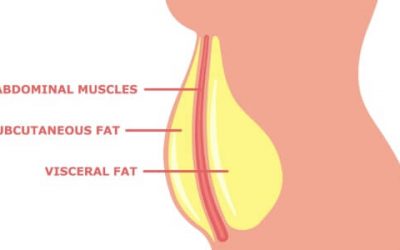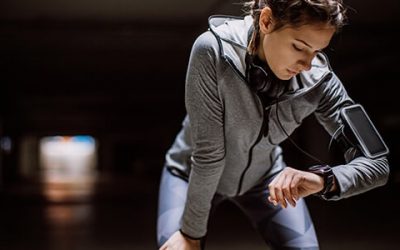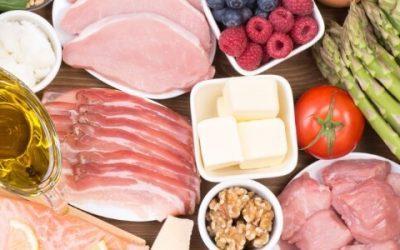
Forget month-long rigorous diets and daily gym sessions — what if the key to losing your belly fat could be a whole lot simpler? “Biosignature,” a theory made popular by renowned Canadian strength coach Charles Poliquin, insists that the key to reducing belly fat is as straightforward as controlling your hormonal balance.
You may already know that hormones play a key role in fat storage in general, but BioSignature takes it one step further. The theory’s premise is that there are 12 key body areas that store fat: cheeks, chin, chest, arms, stomach, love handles, back, mid axillary (around the ribs), knees, calves, front of the thigh and back of the thigh. Each of these come linked with a specific hormone that determines the amount of fat that collects in that area, meaning that balancing the levels of that specific hormone in your body can help reduce fat build-up in the associated part.
With that in mind, here are details on the specific body parts and their correlated hormone, with tips on which types of food you should eat to create a healthier balance for that specific hormone. Combine these diets with the appropriate workout to tone up the muscle group, and you’re sure to be on your way to a fitter body.
Estrogen: The leg muscles between your knees and butt (Quadriceps and Hamstrings)
EAT: Dried fruits are key when it comes to boosting your estrogen, thanks to the high level of phytoestrogens in them that mimics the role of estrogen in the body. Focus on eating more dried apricots, dates and prunes. On top of that, sesame seeds, flaxseed, chickpeas, and green beans are also great alternatives.
DO: Squats are likely the best exercise for strengthening your quads, so whether you prefer box squats, kettlebell squats, barbell squats or any other alternative, make sure to include them in your workout. To target the backs of your legs, replace squats with any form of deadlifts.
Cortisol: Stomach (Umbilical)
EAT: If you’re not good at reducing stress in your life, try these foods, which have been proven to help: asparagus, avocados, berries, chocolate, and chamomile tea. Make sure you avoid alcohol, trans fats, low-fiber carbs, and caffeine, all of which will send those cortisol levels shooting.
DO: Focus on abdominal exercises like crunches, sit-ups, leg lifts, planks, flutter kicks and the likes. Performing a variety of these on a regular basis, rather than doing the same moves repeatedly, is sure to help strengthen your core muscles.

Thyroid: Lower Chest/Upper Abdomen (Mid-Axillary)
EAT: To balance your thyroid levels, steer clear of foods high in omega-6 fats like corn, soybeans, peanuts and safflower, and opt for those high in omega-3 instead, including fish, walnuts, flaxseed, chia seeds and meat from grass-fed animals.
DO: Arm-sculpting workouts are what you’ll want to focus on, including shoulder presses, tricep dips, bicep curls, and tricep pushdowns. Even better, combine all of them with regular cardio work.
Insulin: Upper Back and Obliques (Suprailiac and Subscapular)
EAT: Add plenty of pickled foods to your diet, whether it be kimchi, sauerkraut or pickles. For even better results, combine them with carb-heavy meals like rice and potatoes, and round it all off with some green tea.
DO: Cardio workouts like running, swimming, biking and boxing have shown the best correlation with working off those love handles. Combine them with a series of abdominal workouts like sit-ups and planks for optimum results.
Growth Hormone: Knees and Calves
EAT: When it comes to increasing your growth hormone levels, melatonin-rich foods are the primary solution. Eat more raspberries, pineapple, steak, and raw fish like salmon sashimi, and you’ll be sure to see the difference.
DO: Focus on resistance-training exercises with dumbbells, weights, and/or resistance bands. Straight leg raises and squats also are specially good for building up the knee and calf muscles.
Testosterone: Chest and Arms (Pectorals and Triceps)
EAT: Vitamin D and zinc are two key minerals for naturally boosting your testosterone. You can easily get these from foods like whey protein, garlic, coconut, oysters and pomegranate. Also be sure to avoid alcohol, soy products, trans-fats, and flaxseed products.
DO: Bench presses, bench presses, and more bench presses. Whether you do them seated, on an incline, or with barbells, these are the best workouts for your pectoral (chest) muscles. For triceps, try bench dips and overhead tricep presses.
For more ways to get in shape, contact BodyScene now to get more information on our fitness programmes, one-on-one training, neuromuscular therapy sessions, and much more.



